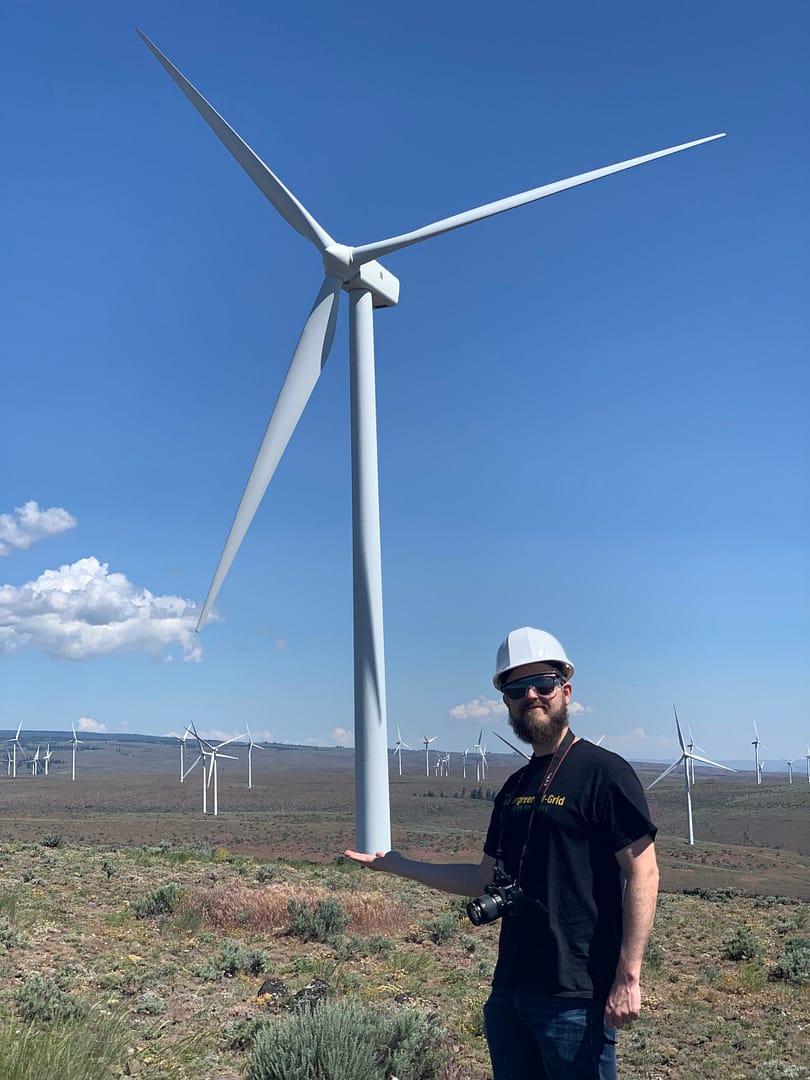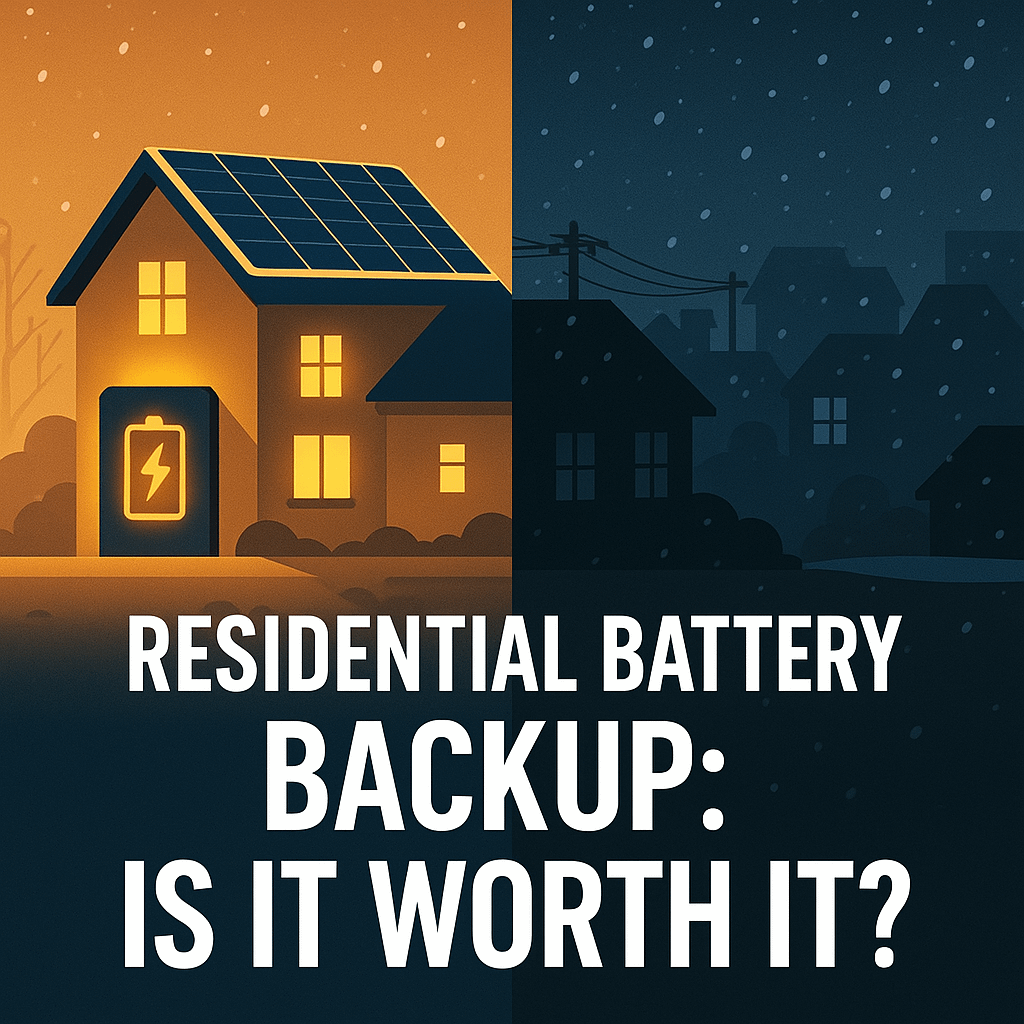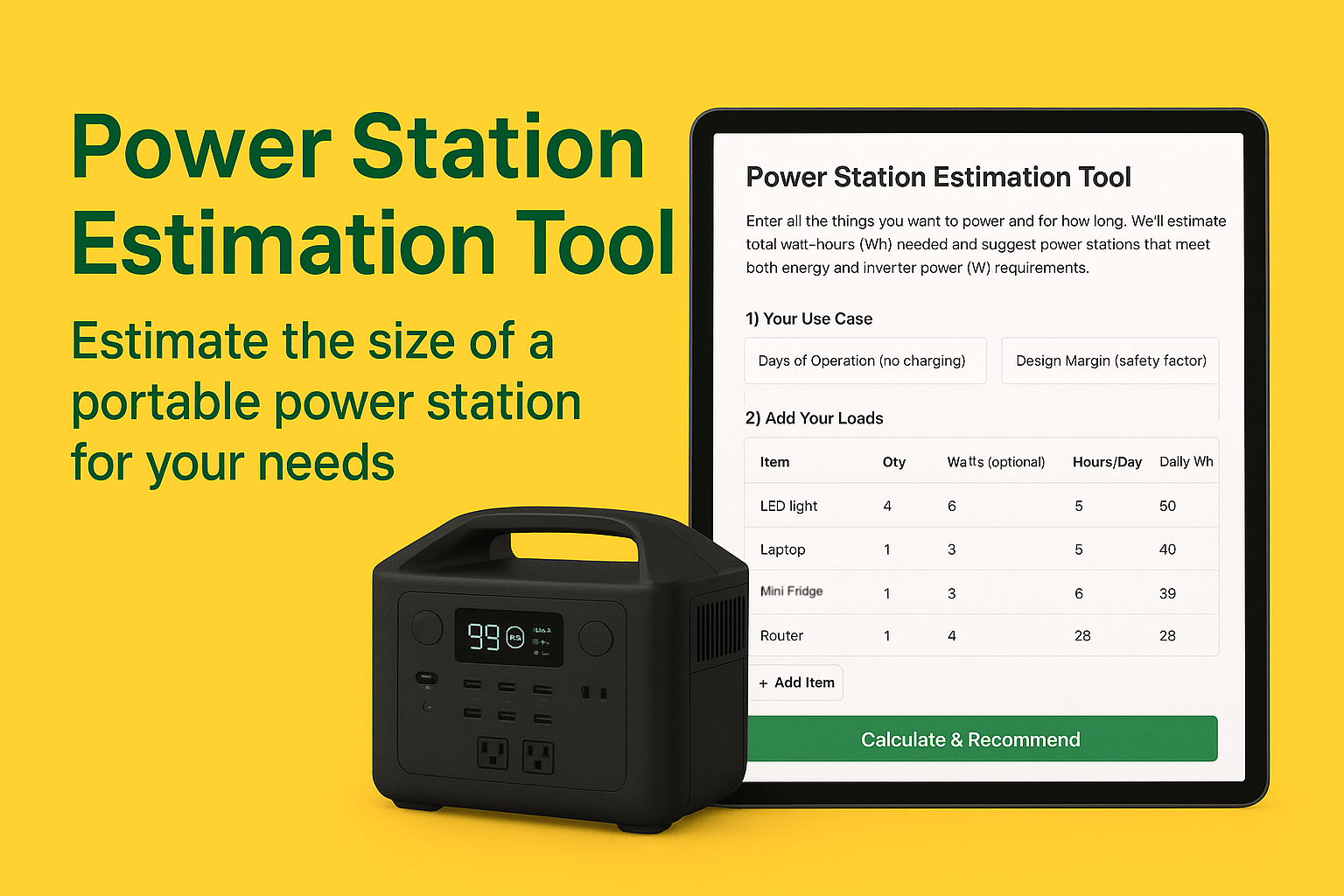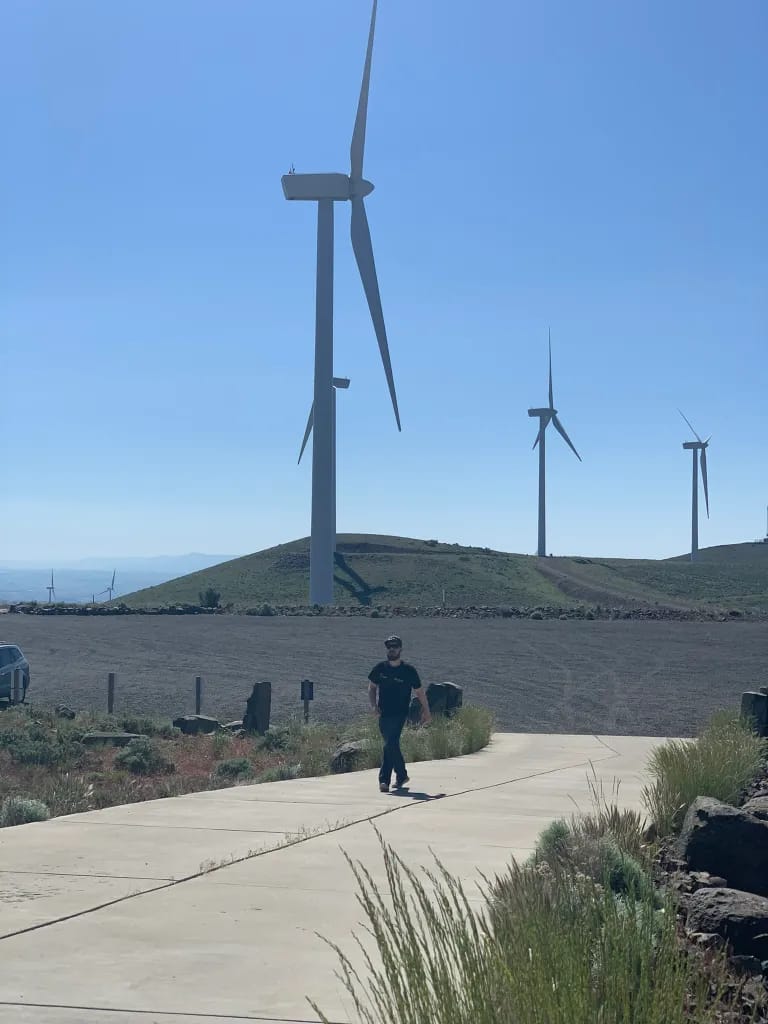
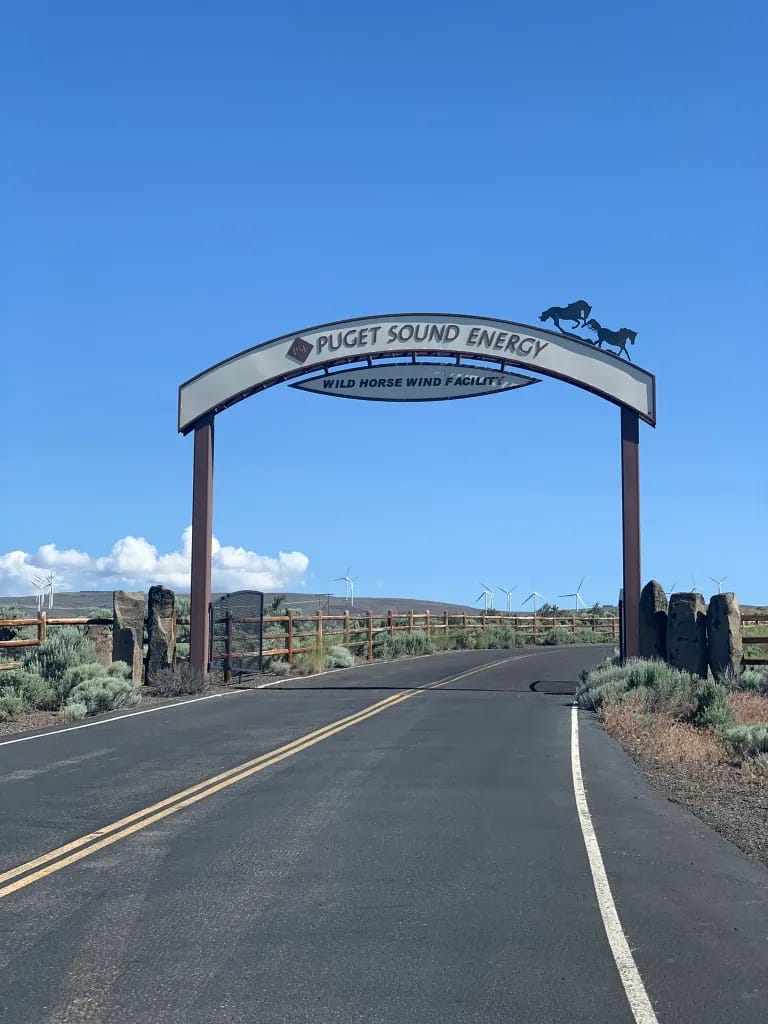
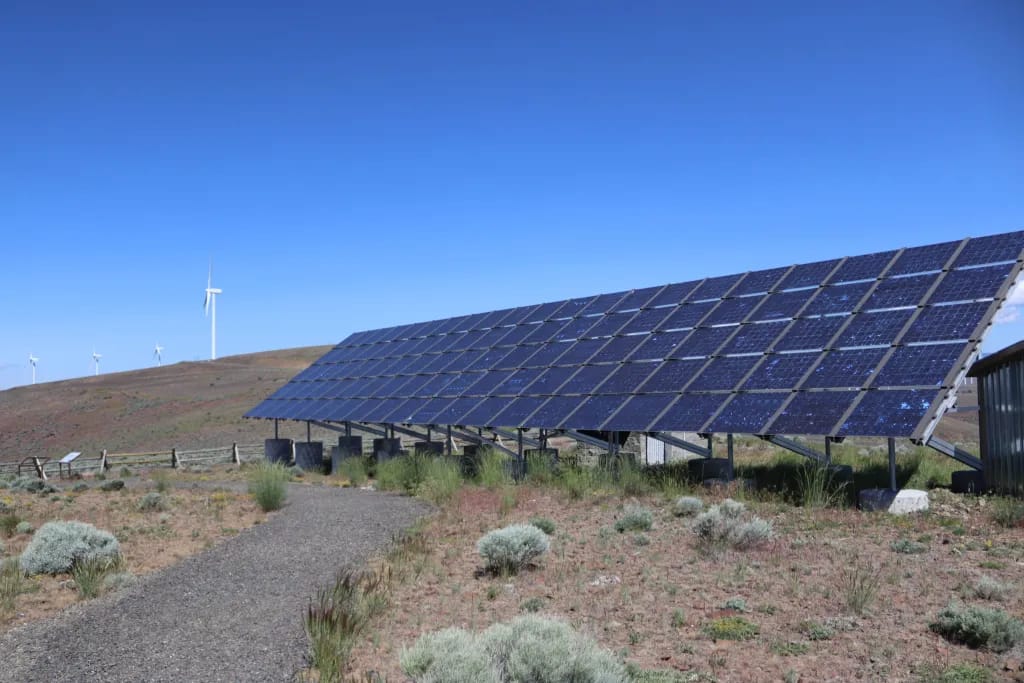
Welcome to Wild Horse!
In the center of Washington State atop a high ridge sits Puget Sound Energy’s (PSE) Wild Horse Wind & Solar Facility. Stretching out over 10,000 acres near the city of Ellensburg, the facility is strategically positioned to harness the strong winds created by the region’s unique geography.
The relative heat difference between eastern and western Washington creates a pressure differential which energizes a wind corridor right through the property. Coupled with a sudden 2,300-foot elevation gain, conditions at Wild Horse are perfect for capturing the wind.
Welcome to Wild Horse! PSE generously offers tours twice daily between April and October 31 (weather permitting). Let’s walk through our visit to this awesome facility on a beautiful July day. And to make the day even more beautiful I was even lucky enough to be joined by my wife! My only regret was not having our kids along too.

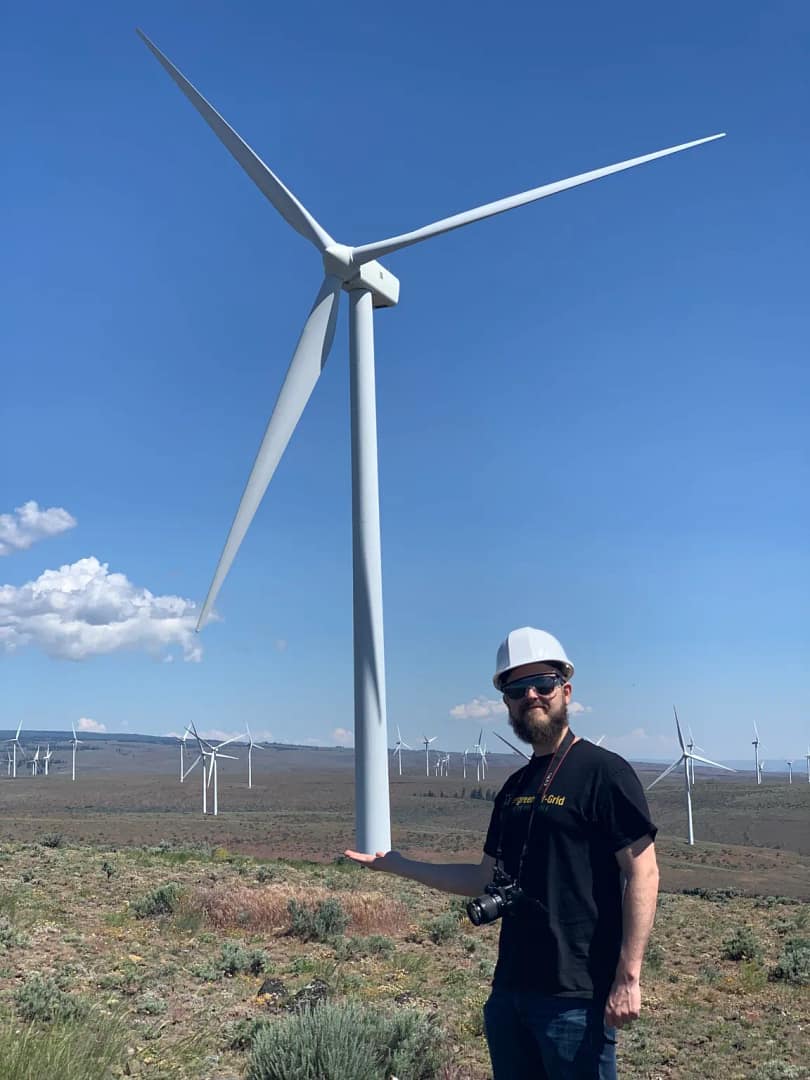
Walking Among Giants
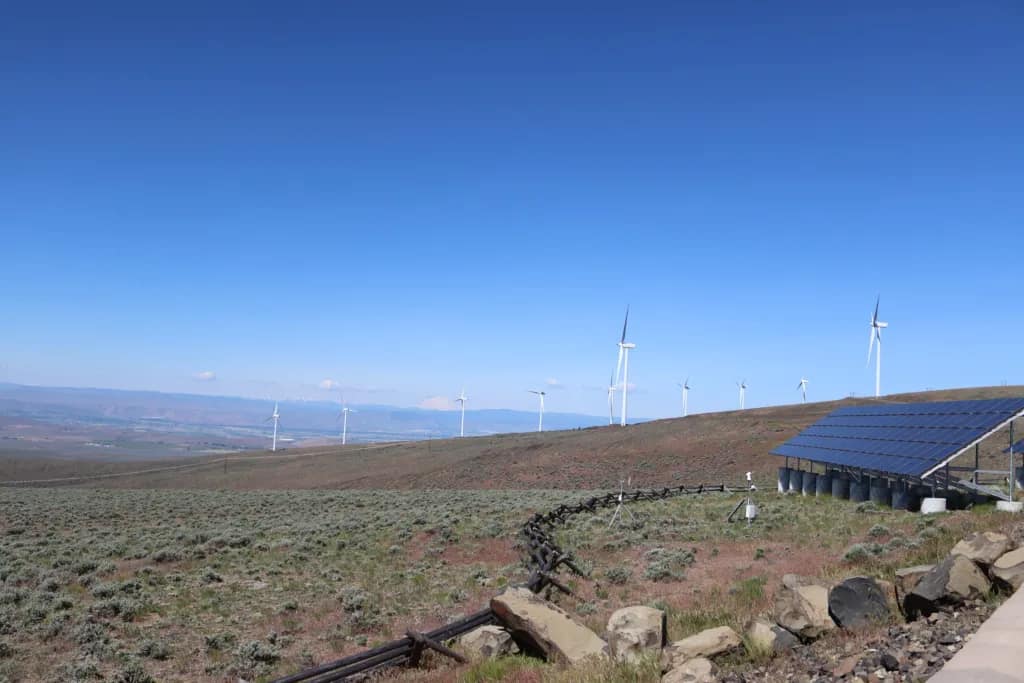
As we approached Wild Horse, we began to see little white sticks on the horizon. As the road twists and turns, the turbines flash in and out of view. Every time they reappear, they seem larger, and larger, until you park and you’re walking among them, completely immersed in these enormous feats of engineering.
Check out these photos for scale. I’m dwarfed as I walk beneath the towering structures. But the scale doesn’t truly set in until I stand next to a single blade. Yes, that is just one single, 128-foot, 7.17-ton blade. Each blade weighs about as much as a semi-truck trailer.
This particular blade was damaged during construction, which is why its collecting dust on display rather than wind on a tower.

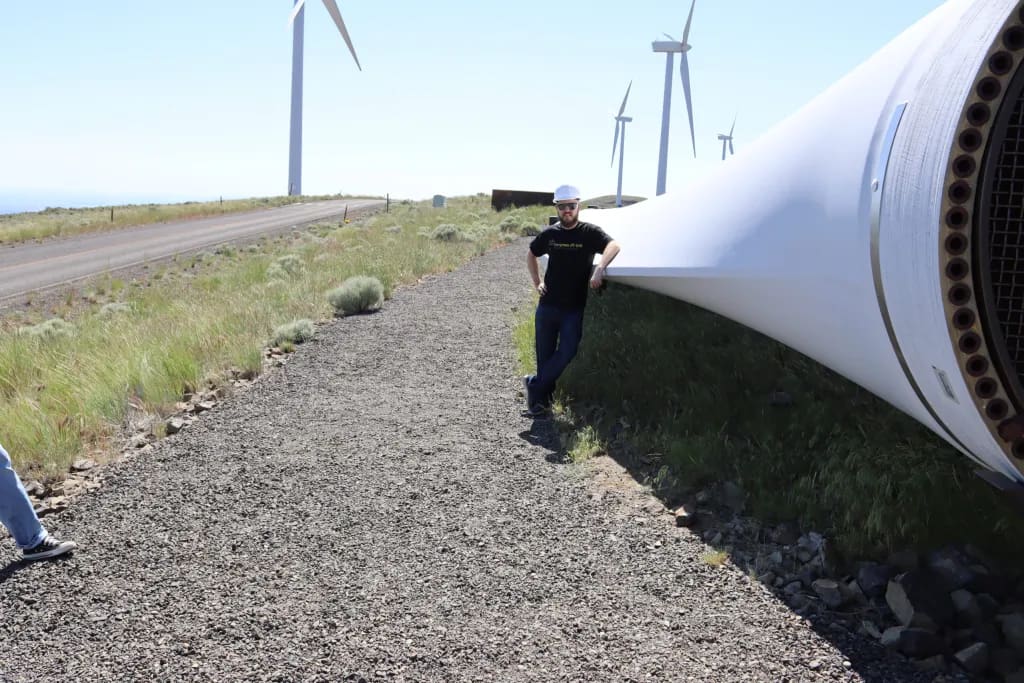
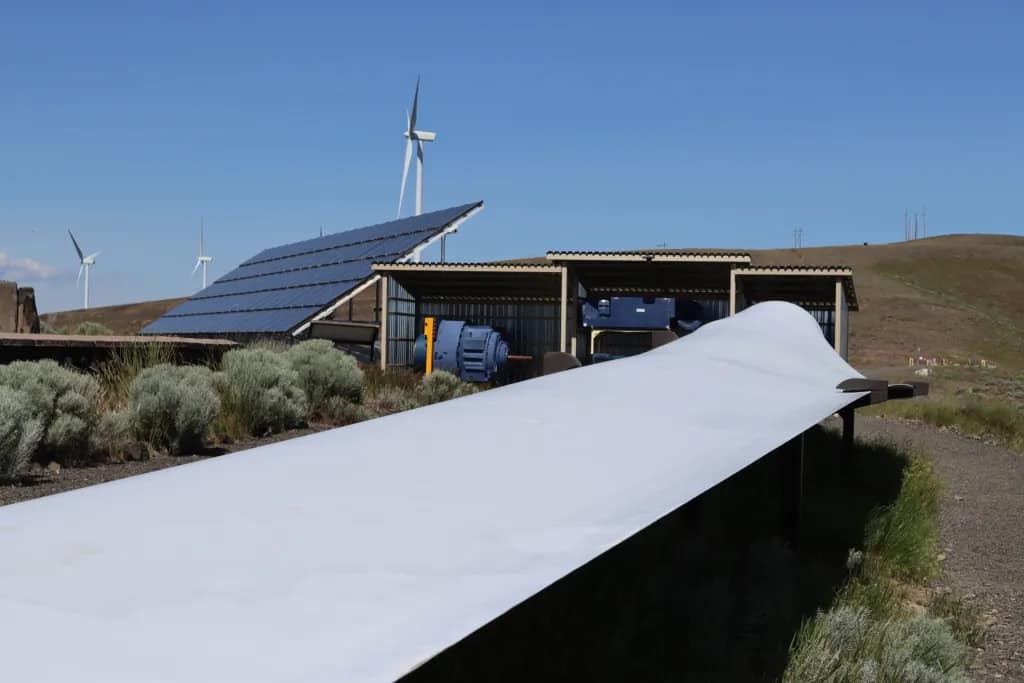
An airplane superimposed on the wind turbine might help you wrap your head around the gargantuanness of these things. The 264ft diameter the turbine blades sweep is larger than the wingspan of a Boeing 747. The experience beneath an operating turbine is felt as much as it is seen or heard.
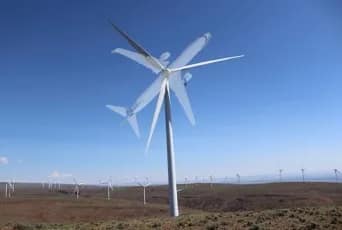
The Turbine
Wild Horse Wind & Solar Farm operates 149 V80 turbines, manufactured by Vestas. Why not 150? Don’t know, I wondered the same thing… On average, these units combine to power about 60,000 homes.
Near the base of the damaged blade is a small shack displaying some of the major turbine generator components.
Gear Box
Pictured below is a gear box that was on display. The gearbox is 17.5 tons, or about the weight of an empty garbage truck. The function of the gearbox is to increase the revolutions per minute (RPM) to over 1800 from about 16. So, while the turbine blades sweep a full rotation about 16 times every minute, the shaft will spin a full 1800 times in the same span thanks to this unit.
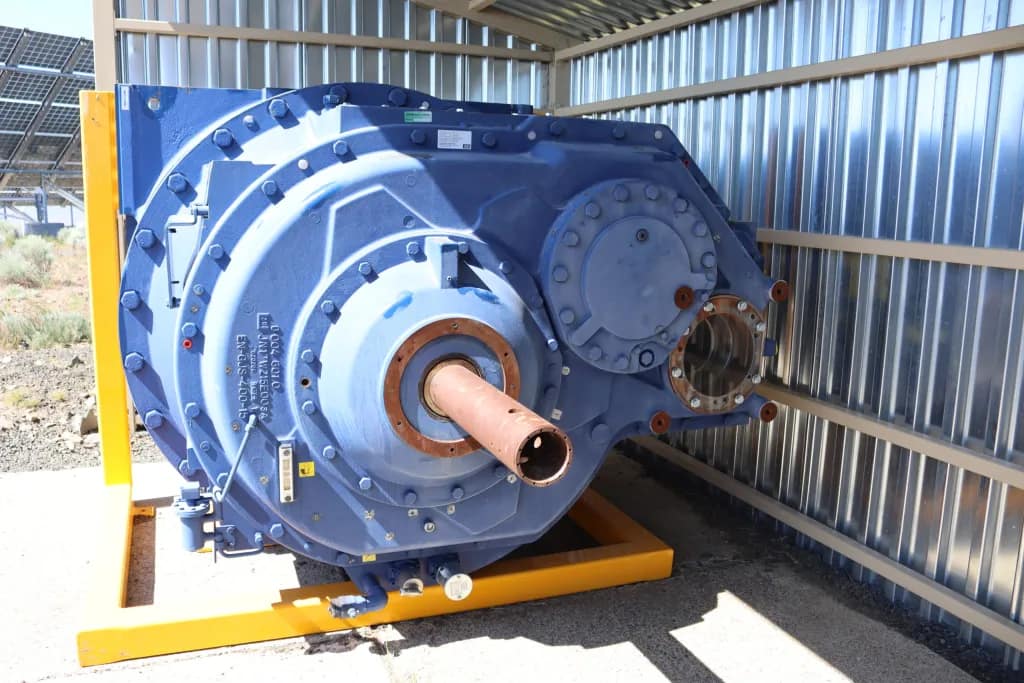
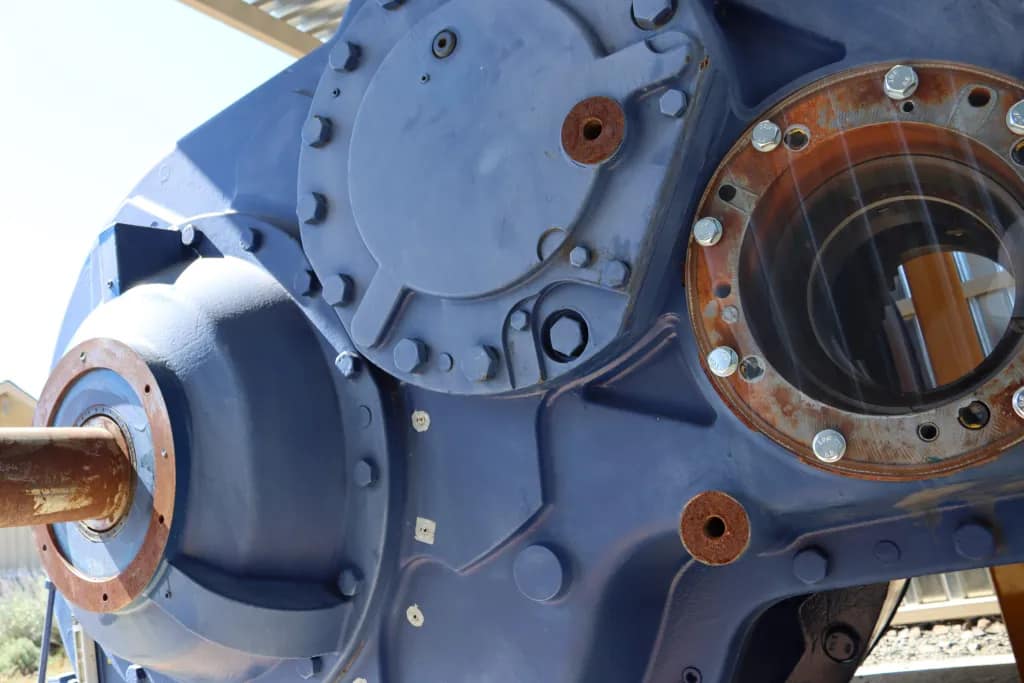
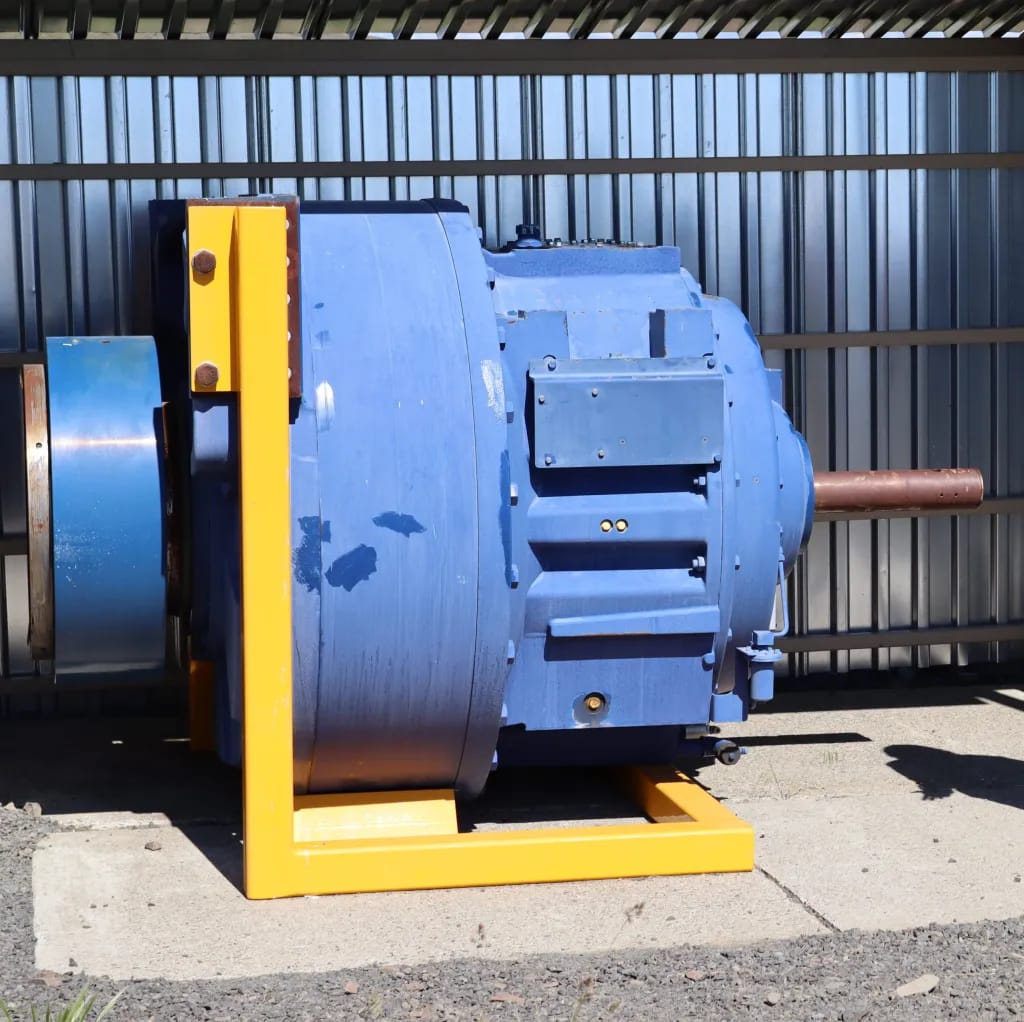
Generator
Pictured below is a behemoth, 8-ton, 1.8-Megawatt generator. On average, each of these units can power several hundred homes. The black strips in the plexiglass case are fuses. When exposed to too much current, they will melt away and interrupt the connection. The unit on top of the generator is an air cooler.
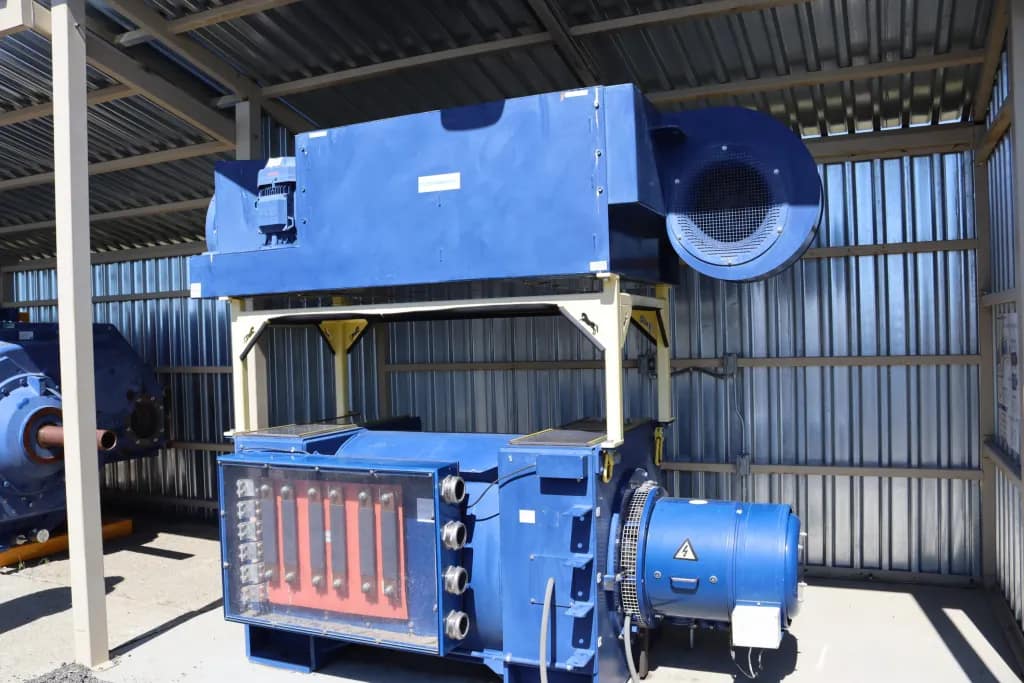
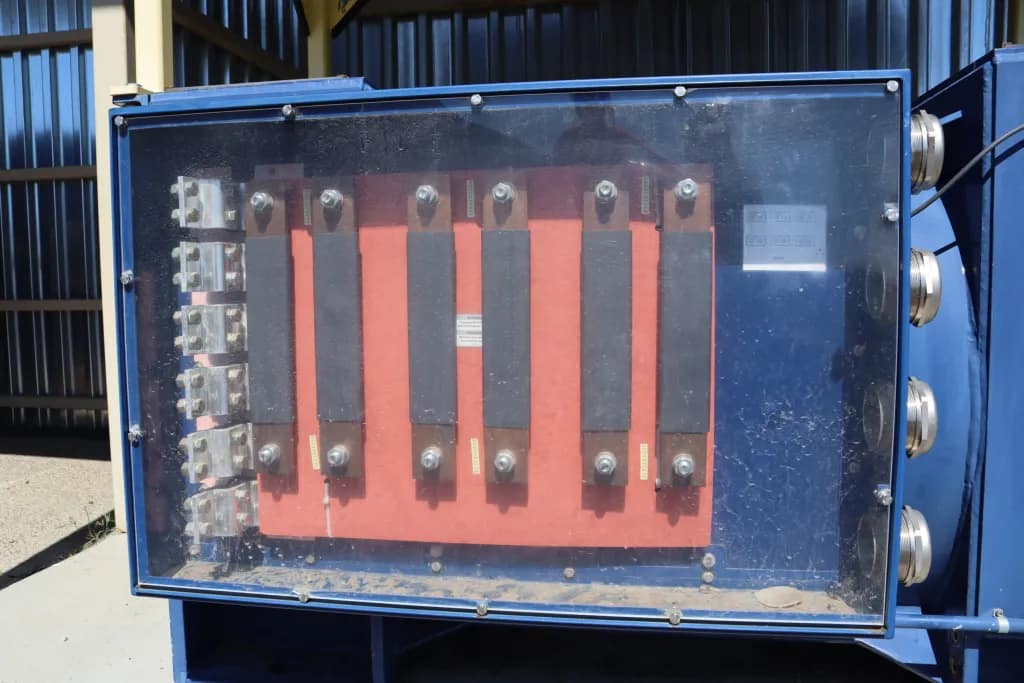
Transformer
In the pictures below we see a dry type 3-phase transformer that steps the generation voltage of 690V up to a whopping 34,500V or 34.5 kV. Just look at the massive conductors needed to carry this much juice. This isn’t your dad’s extension cord.

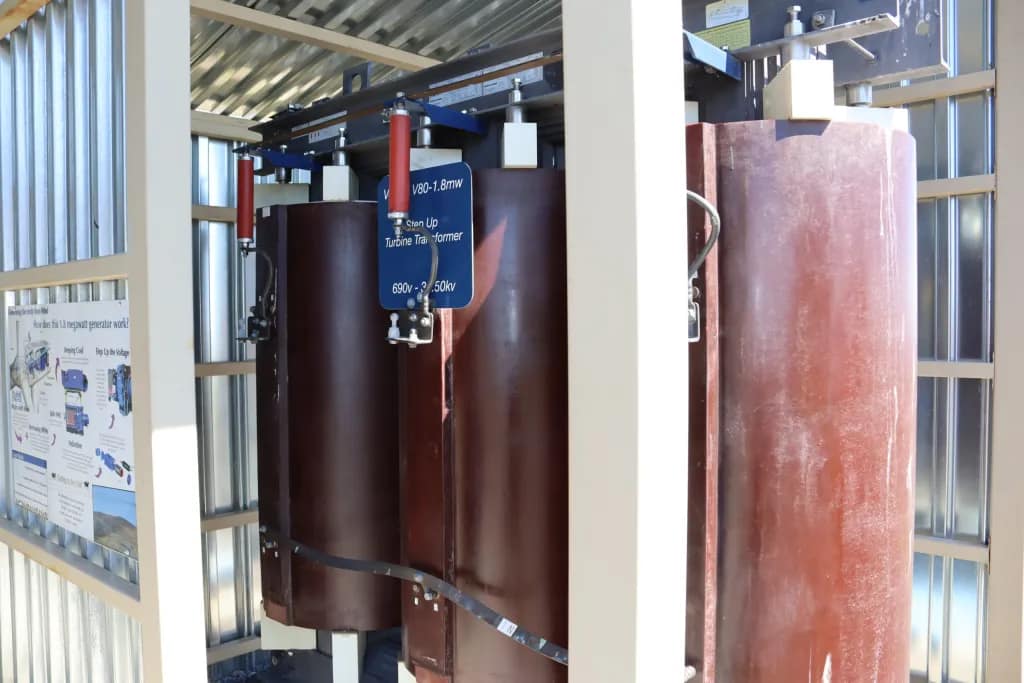
All of this equipment is housed at the very top of the tower in the head of the turbine, also called the nacelle. The nacelle is programmed to uncoil itself after spinning 3 and a half rotations. Those giant conductors would be damaged if not for this safeguard.
The Tower
The 34.5kV conductors drop down the center of the tower. The tower widens from a top diameter of 7 and a half feet to just over 13 feet at the base. Service mechanics climb a 221-foot ladder to get from the base to the top of the turbine. Imagine heading to the top floor of a 20-story building, and forget the stairs, you’ll just take the ladder. Oh, and then start working when you get the top… Much respect! They do get some mechanical assist on their way up, but I won’t hold that against them.

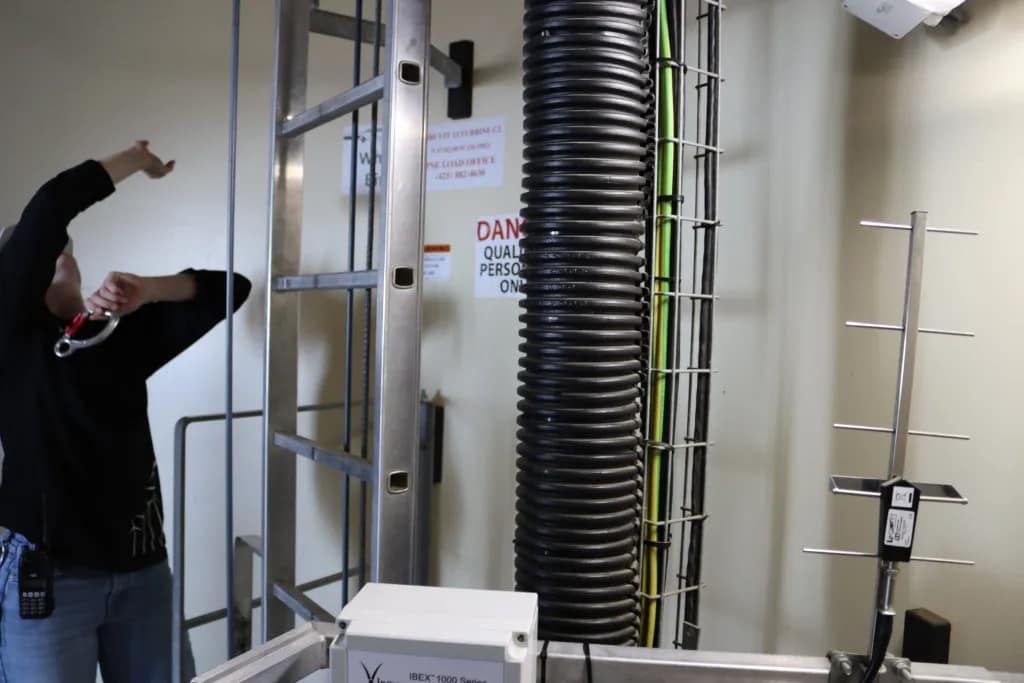
Once at the base of the tower, the 34.5kV conductors are buried 4 ½ feet deep. A web of conductors, over a hundred miles in all, travel from their wind turbines across the expansive farm and converge at a substation. At the substation, the voltage is stepped up once again. This time from 34.5kV to 230kV which is used for long distance transmission.
What About the Birds?

An Invisible Threat
Have you ever been sitting in a house on a sunny afternoon and saw a bird fly full blast into a window? I have… I once had a bird that threw itself with an unflappable determination against my glass as if the very key to its survival lay just beyond the double pane. Over and over he tried, only to be rejected again and again. Well, it turns out this dogged little creature was not one of a kind. According to the American Bird Conservancy an estimated one billion birds are killed after flying into windows every year.
It has also been estimated that between one and ten birds are killed in this manner on every building in the country on an annual basis. Yes, that includes your house.
The Predator
If you’re truly concerned about birds I hope you aren’t a cat lover… These furry feline friends are terrors of the avian world. Cats are the number one threat to birds with an estimated kill count of almost 2 and half billion of our winged buddies in the US every single year.
The Turbines
In the US, all wind turbines combined are about 10,000 times less deadly than cats are for birds. In all, they’re responsible for killing around 250 thousand birds each year. At Wild Horse, surveys have shown that each turbine is responsible for killing 2 to 3 birds per year. This is in line with the avian carnage caused by a typical building.
We don’t want to kill any birds. Killing is bad. We do, however, have a history of accepting a certain amount of risk in this regard. On one hand we’ve determined the ability to see out of our buildings through windows, and that keeping cats as pets justify the sacrifice of billions of birds every year. I’ll let you decide if you think the emissions offset by wind energy are worth the significantly fewer, yet still significant number of bird deaths they are responsible for.
Wild Horse Wind
Being a windfarm, I bet you guessed it’s windy at Wild Horse and you’d be right. With average wind speeds of 17 miles per hour (mph), the site is well suited for wind power generation. The turbines are capable of generating power at wind speeds between 9 and 56 mph.
If the turbines are operated at wind speeds over 56 mph the machinery is damaged. To avoid this, the turbine blades automatically pitch parallel with the wind, apply a break and effectively shut themselves down during high wind events. The turbines can withstand winds up to 150 mph, which would be a Category 4 Hurricane. Fortunately, the highest wind gust ever recorded at Wild Horse was 117 mph in January of 2007.
The wind speeds vary seasonally, with strongest winds in the spring and calmest winds in the late summer. Conveniently, this is when the farm’s solar panels are producing their peak output.
Wild Horse Sunshine
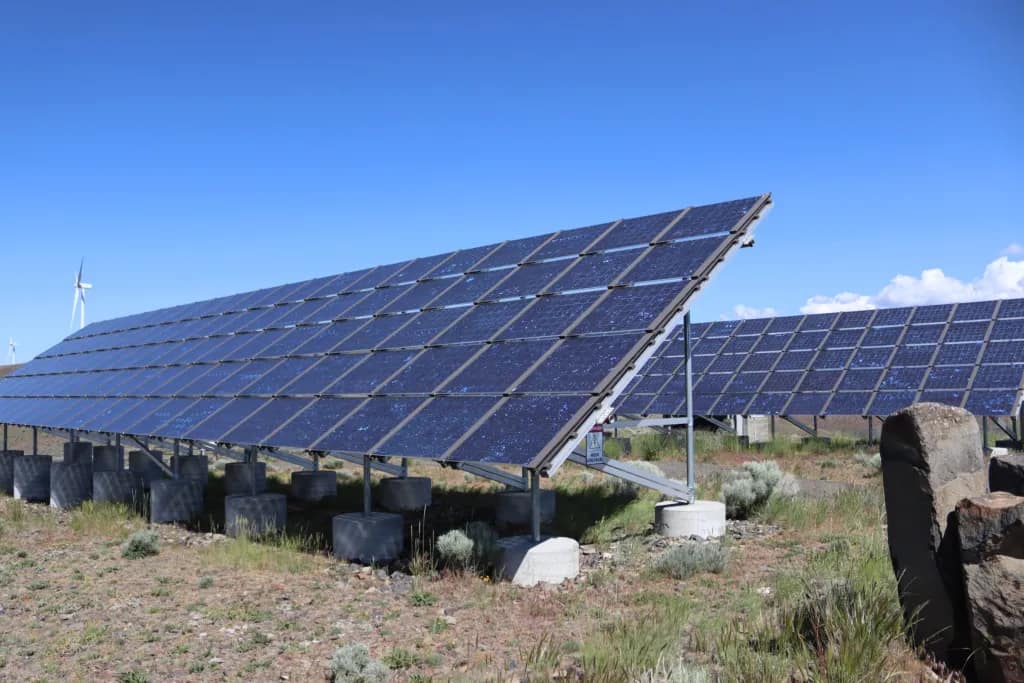
Also at Wild Horse are almost 3,000 solar panels, combining for a total of about 500kW of solar capacity. At just a fraction of the size of current utility scale solar facilities and much less than the output of a single wind turbine, in 2007 it was the largest array in the entire Pacific Northwest. They were installed to research advantages of combining solar and wind generation. Installing solar in windy areas offers natural cooling and improves panel efficiency. Also, as we talked about above, the panels are at peak output when the wind farm operates at minimum output.
Economics
These monstrosities come with a price tag to match. Each of these 149 turbines cost 3 million dollars when they were installed. I’ll let you do the math on that…
While the up front cost is mind-blowing, perhaps so is the fact that the payback period on these wind turbines was only 7 to 13 years. After enough electricity is sold to cover the initial investment, it’s basically all profit from there.
This is strikingly similar to the payback period for rooftop residential solar. After a similar time frame you can be generating free electricity too. You can give your utility $20k over the next 10 – 15 years, or you can apply that towards a solar loan. Your choice.
Success!
We had a great time driving out to tour Wild Horse Wind Farm! It was a beautiful day, and if you live in the area I highly recommend the trip. If you don’t live in the area, what kind of renewable energy facilities are in your area? Comment below, share your stories. What kind of educational events do you like to take your family on?
Thank You PSE!
All the facts and data about Wild Horse Wind Farm was generously provided to us by our tour guide. Please contact the Wind Farm if you’d like to learn more.
Thank You For Reading!
Thank you for visiting Evergreen Off-Grid! Consider subscribing so you can get our posts delivered right to your mailbox. Read more! Tell your friends! Go Solar!

